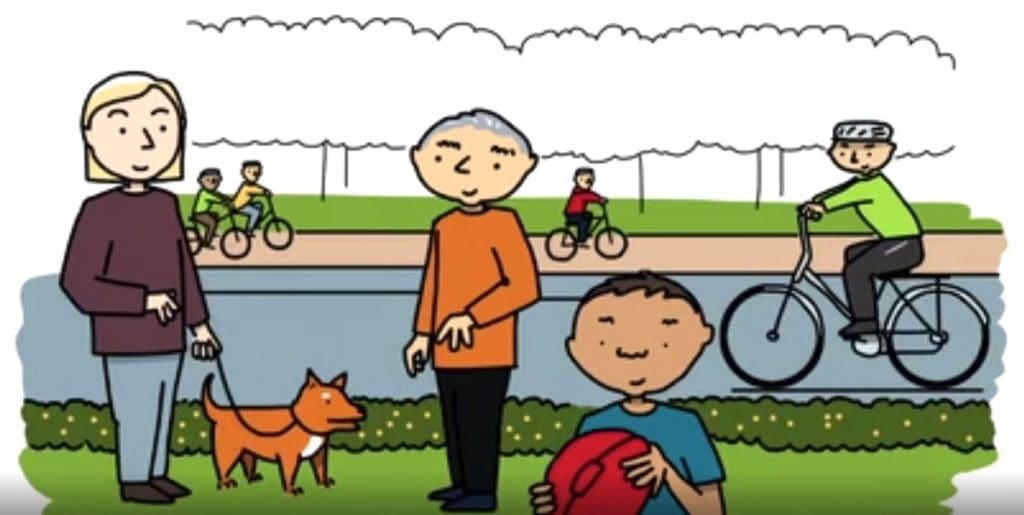Let’s Seize This Golden Opportunity!

Clearly we’ve seen a global tragedy unfold over the first half of 2020. At the time of writing this (23rd July 2020) we’ve seen over 15 million Covid-19 cases leading to over 624,000 deaths worldwide, according to official figures, with actual numbers likely to be much higher.
Meanwhile Australia is battling the much feared ‘second wave’ with yesterday seeing the highest number of new cases since the pandemic reached our shores.
But, despite these grim statistics, this dark cloud does have a silver lining when it comes to our bicycle industry.
As every industry member knows, we’ve seen an unprecedented surge in demand. From Cairns to Hobart, Perth to Sydney we’ve all seen more cyclists of all descriptions out on the roads, trails and paths.
Of course, this has led to the current acute shortages of bicycle stock. I know there are a lot of tired and stressed members of our industry at the moment and I feel for them. But, just like toilet paper, in time, production will catch up to meet demand.
The key question is, ‘What happens next?’
I believe more than ever, we have the power to influence the answer to that question.
We’re at a tipping point, a term made famous by author Malcom Gladwell in his global best-selling book, ‘The Tipping Point’.
To summarise its 279 pages into a few lines, a tipping point is when something has gathered momentum, but could now either stall, or surge.
Imagine a boulder that has slowly started rolling and is now teetering on the lip of a steeper slope. Just a small push in the right direction could see it gather unstoppable momentum. But without that push, it could settle into its current position, or for that matter, even rock backwards a little.
In fact, I think we’ve reached two major tipping points simultaneously. Let me explain…
Tipping Point One: The General Public is Ready for More Cycling
The first relates to community experiences, attitudes and expectations around cycling.
Many people have experienced the fun and practicality of cycling for the first time ever or at least for the first time in years.
Meanwhile regular cyclists have seen how much less stressful it is to ride when vehicle traffic numbers are way down. And every city dweller, cyclist or otherwise, has experienced dramatically cleaner air, quieter streets and suburbs and a general feeling of peace.
This is significant because in Australia 89% of our entire population lives in just 18 cities of 100,000 or more population and 40% in just two cities, Sydney and Melbourne.
Suddenly, acceptance of new cycle lanes, in some cases ‘temporary’ has become more widespread and resistance has weakened.
Already, projects that would previously have been considered radical and impossible to gain approval, are being announced and implemented with relatively little fuss.
Tipping Point Two: Our Governments Urgently Need to Create Jobs
Unemployment has soared. Even the official rate, which is artificially suppressed due to JobKeeper and other programs, is currently the highest this century and tipped to rise.
Federal, state, territory and local governments are lining up to announce new infrastructure funding to create jobs.
It’s well documented that building bicycle infrastructure creates far more hours of work per dollar spent than building new roads. That’s because of the less mechanised, less resource intensive, more hands on nature of bicycle infrastructure construction.
The link between building good infrastructure and growing cycling has been proven many times, everywhere from the Blue Derby MTB park in Tasmania, to Beach Road Melbourne, to a host of other projects, no doubt some near you.
Here’s What You Can Do Right Now – For Free!
We Ride Australia has recently raised sponsorship to produce a great animated cartoon campaign ‘Let’s Keep Moving’ that you can see here.
Most funding decisions and construction management of cycling infrastructure is done at the local government level. Councils will be receiving billions of dollars in Federal and State government economic stimulus infrastructure money over the coming months, but typically they have the power to choose how to spend it.
The Let’s Keep Moving campaign encourages them to spend at least a good part of that money on new and upgraded cycling infrastructure.
Please do not fall into the trap of thinking that you can’t make a difference!
Recently my local Wollongong City Council were going to have a crucial vote on whether to approve four million dollars of cycling infrastructure funding, to be paid for from council funds.
Previously, their policy had been only to spend money on cycling if they got specific state government funding for each project.
In the days before the vote I wrote to all eleven elected Councillors and seven of them personally replied to my letter, which was also read out at the meeting. When it came to the vote, it was unanimous in favour of the historic funding amount. This was front page news of the local paper the next day, followed by six to one favourable letters to the editor the next day and then a positive Editorial column the day after that.
I’m certainly not taking personal credit for any of this. Many other people had also been proactive. In fact, cycling was the second most mentioned topic in budget submissions that they had received (climate change was number one for which of course, cycling is part of the solution).
The moral of this story is, whatever you do is important and can make a difference!
The public is more receptive to cycling than ever.
Governments are ready to spend the dollars.
We’re at a double tipping point and our bicycle industry stands to lock in long term gains if we can tip that boulder over the edge.
Please amplify the Let’s Keep Moving campaign via your website, social media and any other means at your disposal. Do it now!
Thank-you.
For more information about the Lets Keep Moving campaign, visit www.weride.org.au

Test Comment for Captcha setting